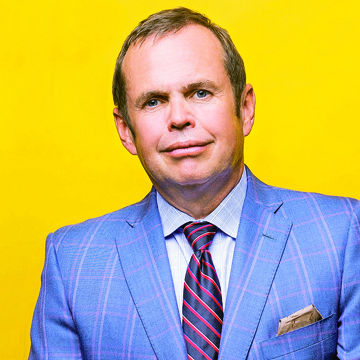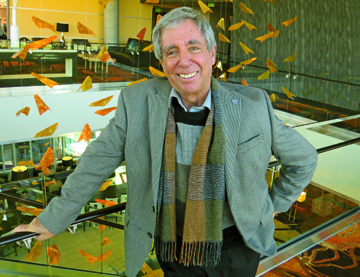Neighborhood Groups Begin To Flex Their Muscles
by Charles Bonniwell
As the Denver City Council is increasingly looked at by some as a tainted and dishonest political entity that ignores the concerns and wishes of residents in favor of powerful real estate developers, many people in Denver have increasingly turned to neighborhood associations and Denver’s Inter-Neighborhood Cooperative (INC) to represent their interests.
INC is the umbrella organization for Registered Neighborhood Organizations (RNOs) which have special legal status in the City and County of Denver. Under the Denver Municipal Code starting in 1979, RNOs have been statutorily required to be notified of and given participation opportunities related to proposed zoning amendments, landmark designation applications as well as planning board and boa rd of adjustment hearings.
rd of adjustment hearings.
Established in 1975 INC was a part of the national neighborhood movement of the 1970s which was originally formed to help revive and conserve older neighborhoods by demanding the right to participate in governmental decisions which affected those neighborhoods.
As a 501(c)(3) non-profit INC is also engaged in charitable as well such as educational activities. The organization was a relatively benign group for many years perhaps best known for its Neighborhood Awards and its awards dinner held every year. But that began to change in the spring of 2012 when Larry Ambrose became the group’s president. A few months earlier Mayor Michael Hancock began his term as 45th mayor of the City and County of Denver with his election orchestrated by real estate developer Pat Hamill and his business associates.
Ambrose, a businessman and lawyer, is today an affiliate faculty member at Metropolitan State University of Denver teaching classes in marketing and advertising. He is the owner of Ambrose Consulting, LLC which advises businesses in small business development and related fields.
It soon became apparent that Hancock was little more than a figurehead mayor while Hamill and his real estate developer friends assumed control. Hamill installed Janice Sinden as Hancock’s chief  of staff so he could know everything that was going on in the mayor’s office without having to ask Hancock himself. Sinden had been Hamill’s executive director at the business advocacy group Colorado Concern when he was chairman of the board.
of staff so he could know everything that was going on in the mayor’s office without having to ask Hancock himself. Sinden had been Hamill’s executive director at the business advocacy group Colorado Concern when he was chairman of the board.
Neighborhoods began to be overrun by high density projects with developer friends of the mayor seizing land with the help of the city including parks, open space and even church properties. Neighborhood destroying projects were moved through the
planning process as well as final City Council approval with incredible rapidity one after the other including Lowry Vista, Hentzell Park, City Park Zoo Gasification Project, Sloan’s Lake, Mount Gilead/Crestmoor Park, Buckley Annex and West Highlands.
City Council meetings would go late into the night with citizen after citizen begging the Council to take a closer look at the effect of these projects on their neighborhoods only to get vapid bored looks from councilmembers and overwhelming votes in favor of the developers.
INC became the one place families could go to have their concerns at least heard and Larry Ambrose became a hero to many who felt the system to be corrupt and unresponsive.
Ambrose began to give real voice to the citizens’ concerns. When Brad Buchanan, the highly controversial executive director of Denver’s Community Planning and Development Department (DPCD) went to T he Denver Post to extol the virtues of these high density projects, Ambrose declared to The Post, “It’s very easy for Brad to come into the city and shove this high density down our throats and then drive home to his ranch.” The embarrassed and humiliated Buchanan was unable to publicly respond.
he Denver Post to extol the virtues of these high density projects, Ambrose declared to The Post, “It’s very easy for Brad to come into the city and shove this high density down our throats and then drive home to his ranch.” The embarrassed and humiliated Buchanan was unable to publicly respond.
In the case of a gasification plant that the Denver Zoo wanted to build at City Park, Ambrose wrote a letter on behalf of INC demanding the City Council hold a hearing on many of the concerns that it had failed to address in its previous unanimous approval. This resulted in a scathing editorial by The Denver Post calling the opposition “misguided and, frankly way too late.” Ambrose wrote a stirring rebuttal that was published by The Post.
Less than two-weeks later to the absolute mortification of The Post’s editorial board the Zoo announced, in effect, that the opponents of the project had been right all along and the project was being ditched. The editorial board groaned in a follow-up editorial — ”What a fiasco.” Ambrose’s reputation and standing reached new heights among Denver residents.
Ambrose and INC have come up with an eight page 2,769 word platform document whereby residents and RNOs would have a great deal more to say in how the city is developed including having the mayor and other city officials appoint representatives of RNOs to city boards and commissions.
Among other major reforms the platform envisions is that higher density zoning would not be approved unless any adverse impacts on traffic or parking can be mitigated.
The degree of increased influence that INC has achieved is reflected by the fact that
Buchanan’s DPCD publicly declared that it had reached out to INC to ask for the final zoning/planning platform document and that it shared “INC’s overreaching goals of transparency, partnership and meaningful public involvement … all toward our shared goal of building community.”
The statement of DPCD bought gales of derision from resident activists. Jennifer James noted, “Buchanan and his believably sleazy co-horts at DPCD think they can placate Larry and INC with some verbal jujitsu. There would have been no need for the platform in the first place if DPCD was not a moral and ethical cesspool. The adoption of the platform by INC is itself a repudiation of what the mayor and Buchanan have done to our neighborhoods. If there was any justice in the city there would be a full and thorough criminal investigation of the planning process in the City and County of Denver. Maybe someday there will be, but it will probably be too late to save many portions of the city.”
As for Ambrose himself he claims no overriding ambitions. “I just want to give voice to the residents that the government of the City and County of Denver is ignoring,” said Ambrose. “The average citizen is the last person the city listens to unfortunately.”
But many other people note that he garnered over 2,300 write-in votes in the 2015 mayoral election which is said to be the highest number of write-in votes in the history of the city. This is all the more remarkable in that Ambrose did not participate in the effort or campaign and all the work was done by admirers of Ambrose.
Members of INC, in their individual capacities, helped elect four members to the Denver City Council in the election this last spring who they believe will not be co-opted by real estate developers. Some of those hard-charging individuals want to look at electing a new mayor in 2019.
Mayor Hancock had no organized opposition in 2015 but already there are increasing numbers of politically savvy people in Denver who are stating that “Ambrose for Mayor 2019” is making more and more sense.

